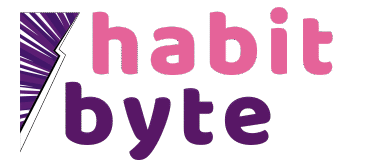10 Journaling Practices for Self-Reflection and Mental Health (That You’ll Actually Keep)
Journaling is a low-pressure way to slow your thoughts, regulate emotions, and notice patterns you usually miss in the rush of the day. A few honest lines can create clarity, reduce stress, and strengthen self-compassion. Use these simple, structured prompts to start,and keep,journaling for self-reflection and mental health, even when you’re short on time.
1) The 5-minute check-in
Set a timer and finish this sentence: “Right now I feel…, because…, and I need….” Name one tiny action you can take today. Example: “I feel edgy because I slept poorly, and I need a 10-minute walk and to defer one task.”
2) Mood + body scan
Write three body sensations, three emotions, and one helpful next step. This links mind and body so you can respond, not react. Example: “Tight jaw, shallow breath, heavy shoulders; worry, irritability, hope; sip water and stretch.”
3) Thought reframe (from harsh to helpful)
Capture the tough thought, then craft a balanced alternative. Aim for realistic, not sugary. Example: “Harsh: I’m failing at everything. Helpful: I’m overwhelmed today; I’ll do one priority now and ask for help on the rest.”
4) 3-2-1 gratitude that feels real
List 3 small comforts, 2 strengths you used, 1 person or pet you appreciate. Concrete details make gratitude stick. Example: “Sun patch on the floor; clean hoodie; hot tea. Strengths: I showed up; I asked a good question. Appreciate: my sister’s meme.”
5) Letters you won’t send
Write directly to someone (or a part of yourself) to express what’s hard to say out loud. You don’t have to share it,catharsis is the point. Example: “Dear Boss: I need clearer deadlines to do my best work.”
6) Critic vs. coach dialogue
Split the page in two. On the left, the inner critic’s lines; on the right, your compassionate coach’s responses and next step. Example: Critic: “You messed up again.” Coach: “You corrected it. What’s the next right step?”
7) Values compass
Describe a situation that felt off, then name the value that was bumped and one aligned action. This turns discomfort into direction. Example: “Value: honesty. Action: tell my friend I need a quieter hangout this week.”
8) Boundary rehearsal
Script a boundary in one sentence and add a calm repeat for pushback. Practicing on paper makes it easier to enforce in real life and reduces anxiety around saying no. Example: “I’m not available for extra shifts. If pressed: I understand the need, but my answer is no.” Reflecting on how it feels to set limits on paper helps build confidence and emotional resilience over time.
9) Worry window
Give yourself five minutes to dump every worry. Star the items you can influence, then write one tiny next step for just one starred item. Example: “Budget → review subscriptions tonight; cancel one.” This practice externalizes anxieties, helping you distinguish between what’s actionable and what isn’t, so your mind can rest more easily outside the journaling session.
10) Future-you note
Write from your compassionate future self about what you handled and learned. Anchor it to one encouraging sentence you can reuse. Example: “You didn’t do it all at once, but you showed up and made steady progress.” Returning to this note in challenging moments reminds you of your growth, reinforces self-compassion, and creates a gentle framework for reflection and decision-making.
Bringing It All Together
Over time, these journaling practices form a practical toolkit for mindful self-reflection. You’ll start noticing patterns in your thoughts, moods, and reactions, gain clarity on what truly matters, strengthen emotional habits, and naturally take more intentional action in your daily life. Each entry,whether a 5-minute check-in, a worry window, or a future-you note,becomes a deliberate step toward steadier focus, reduced stress, and deeper self-understanding. Consistency matters more than length; even brief, daily reflections accumulate into meaningful insight, purposeful decisions, and lasting mental wellness.
